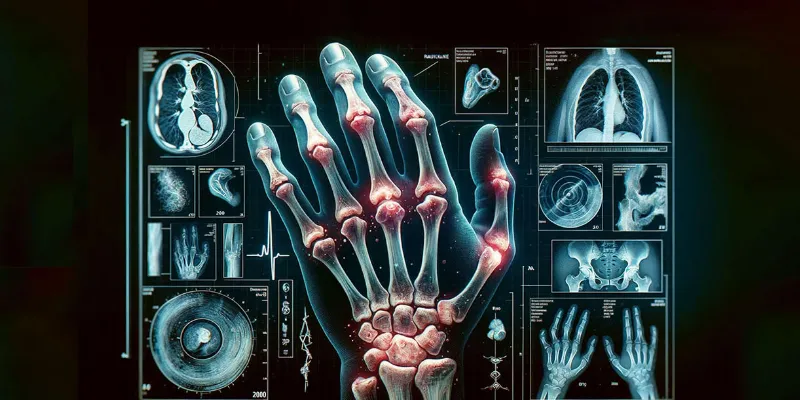Breakthrough Discovery Offers New Therapeutic Approach for Osteoarthritis

31 August 2023
A significant discovery regarding osteoarthritis, a joint disease affecting millions, centers on the protein c-Fos, crucial for protecting joint cartilage. Contrary to beliefs that osteoarthritis results from aging-related wear and tear, recent research led by MedUni Vienna links the condition to metabolic and inflammatory joint activities. Elevated c-Fos levels were found in osteoarthritis patients, revealing its role in safeguarding cartilage. The absence of this protein can intensify joint diseases.
This new understanding emerges from a collaborative study spearheaded by MedUni Vienna and the Karolinska Institute in Stockholm, published in the Annals of Rheumatic Diseases. Erwin Wagner, a molecular geneticist from MedUni Vienna, led the research, focusing on c-Fos – a protein already known for its association with bone and cartilage disorders. Elevated levels of c-Fos were identified in cartilage samples from both humans and mice suffering from osteoarthritis. It was determined that this protein, secreted in response to osteoarthritis signals, safeguards the cartilage.
The study further unveiled that c-Fos levels correspond to the severity of osteoarthritis progression. An absence of this protein can lead to severe joint diseases, as observed in animal models. The protein c-Fos influences chondrocyte (cartilage cells) proliferation and differentiation, but its direct involvement in osteoarthritis had not been studied functionally before.
Notably, c-Fos modulates the balance between anaerobic glycolysis and the tricarboxylic acid cycle in chondrocytes in response to osteoarthritis signals. This sheds light on a new metabolic adaptation in these cells controlled by c-Fos, potentially leading to therapeutic relevance.
More than 500 million people suffering worldwide
According to the World Health Organization (WHO), osteoarthritis is the most prevalent degenerative joint disease. It impacts more than 300 million people's knees and around 240 million people's hips globally. With rising factors like obesity and an aging population, these numbers are set to escalate. The disease severely affects the quality of life, often causing pain, limiting mobility, and potentially leading to disability. Although current treatments are primarily focused on pain alleviation, maintaining joint mobility, and reducing inflammation, Wagner believes the findings could revolutionise treatment approaches.
Abstract of original research
Metabolic rewiring controlled by c-Fos governs cartilage integrity in osteoarthritis
Abstract: The activator protein-1 (AP-1) transcription factor component c-Fos regulates chondrocyte proliferation and differentiation, but its involvement in osteoarthritis (OA) has not been functionally assessed. Results: FOS-positive chondrocytes were increased in human and murine OA cartilage during disease progression. Compared with c-FosWT mice, c-FosΔCh mice exhibited exacerbated DMM-induced cartilage destruction. Chondrocytes lacking c-Fos proliferate less, have shorter collagen fibres and reduced cartilage matrix. Comparative RNA-seq revealed a prominent anaerobic glycolysis gene expression signature. Consistently decreased pyruvate dehydrogenase (Pdh) and elevated lactate dehydrogenase (Ldh) enzymatic activities were measured in situ, which are likely due to higher expression of hypoxia-inducible factor-1α, Ldha, and Pdk1 in chondrocytes. In vivo treatment of c-FosΔCh mice with DCA restored Pdh/Ldh activity, chondrocyte proliferation, collagen biosynthesis and decreased cartilage damage after DMM, thereby reverting the deleterious effects of c-Fos inactivation. Conclusions: c-Fos modulates cellular bioenergetics in chondrocytes by balancing pyruvate flux between anaerobic glycolysis and the tricarboxylic acid cycle in response to OA signals. We identify a novel metabolic adaptation of chondrocytes controlled by c-Fos-containing AP-1 dimers that could be therapeutically relevant.






Comments
No Comments Yet!